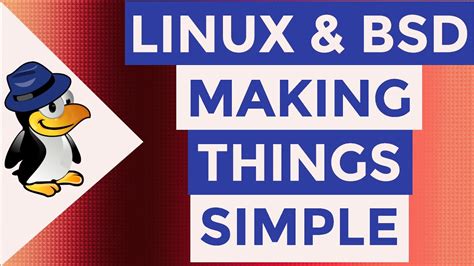In the ever-evolving landscape of operating systems, it’s clear that both passion and practical considerations shape user choices. Platforms like Linux and BSD have long been hailed for their flexibility, performance, and the open-source spirit they embody. Yet, as some users point out, maintaining such systems demands significant time and energy – resources that might be in short supply as one ages or grows increasingly busy with professional and personal commitments.
One avid user shared their frustration with the intricacies of hobby computing. The user remarked how, over time, their enthusiasm waned, not due to the inherent qualities of Linux or BSD, but rather due to the mounting complexity and the continual maintenance these systems required. This sentiment resonates deeply within the tech community, reflecting a broader shift towards usability and efficiency over customization and control.
Critics of mainstream operating systems argue that these platforms, notably macOS and Windows, prioritize profit over user control. Yet for many, the seamless integration and rich app ecosystems provided by these systems are compelling enough reasons to overlook such drawbacks. For instance, macOS offers a polished user experience, renowned for its cohesive hardware-software integration, something that Linux lacks inherently due to its multifaceted distribution structure.
The conversation often pivots to the world of applications, where Linux shines in some areas and lags in others. Take `nixos`, a user-centric Linux distribution praised for simplifying system administration. However, some users, conditioned by environments like Arch Linux, appreciate the extensive software repository that the Arch User Repository (AUR) provides, which can sometimes edge out the offerings of `nixos`.
Another frequent debate centers on the reliability and robustness of these platforms. `Nixos` users often cite its stability, a sentiment echoed by users of Docker and Conda, who appreciate the containerization it seamlessly supports. OpenSUSE, too, has its advocates who laud its effortless handling of hardware configurations—a user was pleasantly surprised to find it outperformed Windows in driver support for a year-old Lenovo laptop.
Discussing the hardware, the conversation inevitably touches on MacBooks. Despite their well-known drawbacks, such as the lack of USB-A ports and sometimes intrusive macOS design choices, Apple’s laptops remain a benchmark for elegance and functionality. A noteworthy observation is their long battery life and consistent performance, coupled with a touchpad experience that remains unrivaled since its debut in the mid-2000s.
That said, alternatives are emerging. The Framework laptop, for example, garners attention for marrying modularity with minimalism, allowing users to upgrade components with ease—a feature starkly missed in traditional laptops. However, it illustrates a broader sentiment that modern non-Mac laptops continue to fall short due to deliberate compromises in design and function by manufacturers keen on cutting costs.
Ultimately, the decision hinges on what one values more: the freedom and complexity of Linux/BSD or the streamlined, albeit restrictive, experience of macOS and Windows. Notably, tools like WSL2 underscore a middle ground, offering the Linux environment within the Windows OS, which can offer a best-of-both-worlds scenario for many.
In closing, as computing needs evolve, it’s evident that the choice of operating system remains deeply personal, shaped by a blend of idealism and pragmatism. Whether one sticks to the trusted macOS, dives into the modular world of Linux, or dual-boots across systems, the primary goal remains to enhance productivity and maintain a smooth user experience, a pursuit that is as challenging as it is rewarding.


Leave a Reply